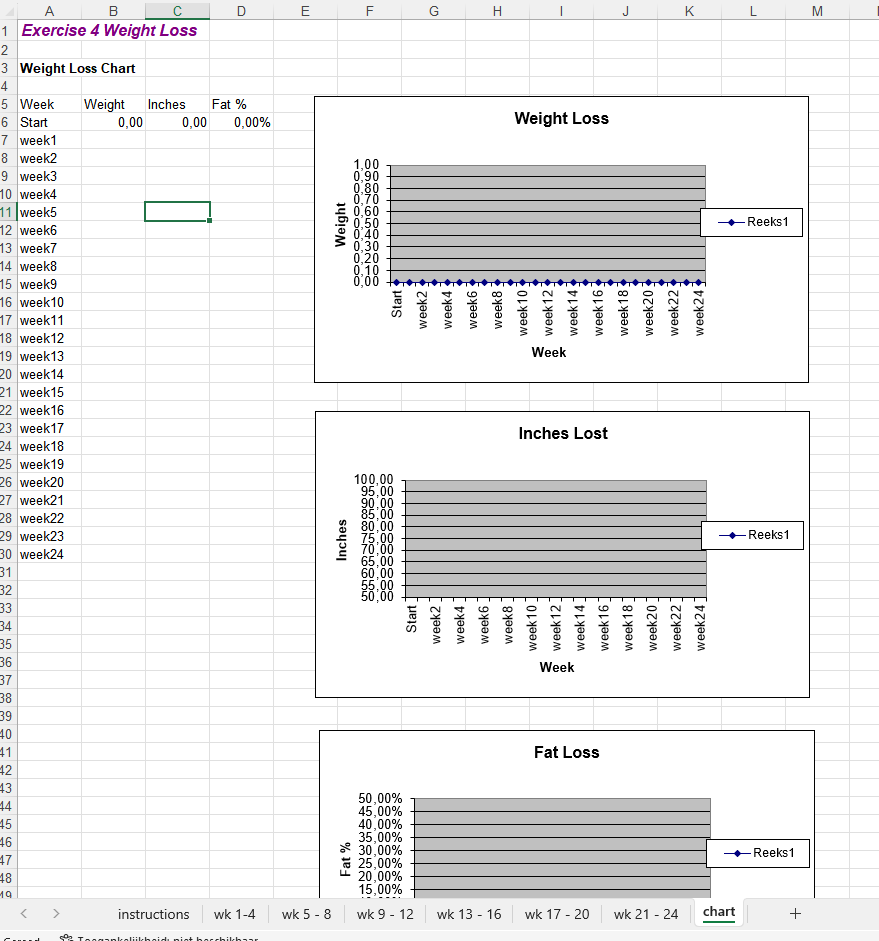weight loss chart
Save, fill-In The Blanks, Print, Done!

Download weight loss chart
Microsoft Spreadsheet (.xls)Or select the format you want and we convert it for you for free:
- This Document Has Been Certified by a Professional
- 100% customizable
- This is a digital download (116 kB)
- Language: English
- We recommend downloading this file onto your computer.
- Week #
- Weight
- % Change
- Waist
- Hips
- Upper Arms
- Thighs
- Chest
- Total Inches
- Body Fat
- % Change
- Start
- Week and Day Columns: Fill in the week number and the specific day you are recording data.
- Weight: Enter your current weight.
- % Change: Calculate and record the percentage change in your weight from the start of the week.
- Body Measurements:
- Waist: Measure and record the circumference of your waist.
- Hips: Measure and record the circumference of your hips.
- Upper Arms: Measure and record the circumference of your upper arms.
- Thighs: Measure and record the circumference of your thighs.
- Chest: Measure and record the circumference of your chest.
- Total Inches: Sum up all the body measurements (waist, hips, upper arms, thighs, and chest) to get the total inches.
- Body Fat Percentage: Record your body fat percentage.
- % Change in Body Fat: Calculate and record the percentage change in your body fat from the start of the week.
Example Instructions:
Starting Numbers: Enter your initial weight, waist, hips, upper arms, thighs, chest, and body fat percentage in the 'Start' row.
Weekly Tracking: Record your weight and measurements once a week, ideally on the same day each week.
Daily Tracking (Optional): If you prefer, you can track your weight and measurements daily. Just ensure you also update the weekly numbers.
Charts and Visualization: Check the chart page to see your progress in weight, inches lost, and body fat percentage.
DISCLAIMER
Nothing on this site shall be considered legal advice and no attorney-client relationship is established.
Leave a Reply. If you have any questions or remarks, feel free to post them below.
Related templates
Latest templates
Latest topics
- Excel Templates
Where do I find templates for Excel? How do I create a template in Excel? Check these editable and printable Excel Templates and download them directly! - GDPR Compliance Templates
What do you need to become GDPR compliant? Are you looking for useful GDPR document templates to make you compliant? All these compliance documents will be available to download instantly... - Google Docs Templates
How to create documents in Google Docs? We provide Google Docs compatible template and these are the reasons why it's useful to work with Google Docs... - IT Security Standards Kit
What are IT Security Standards? Check out our collection of this newly updated IT Security Kit Standard templates, including policies, controls, processes, checklists, procedures and other documents. - Letter Format
How to format a letter? Here is a brief overview of common letter formats and templates in USA and UK and get inspirited immediately!
cheese

